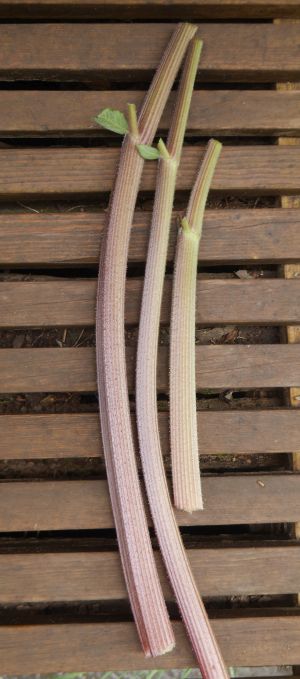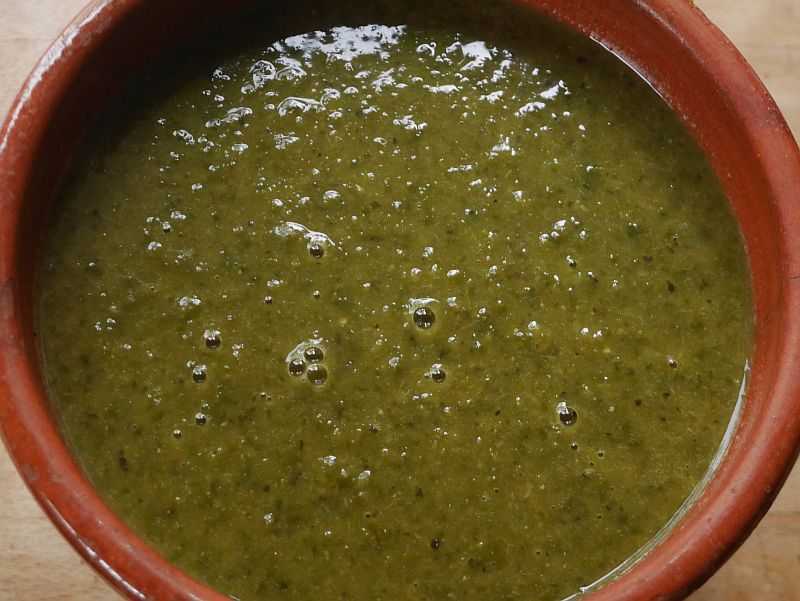No, I’m not vegan and have never been, I’ve been lactovegetarian with the occasional wild fish over 40 years. We always have some Norwegian dried cod (baccalao) at the ready in our cool larder. The usual way to make the dish baccalao here is to hydrate the fish for a couple of days and then layer potatoes, bulb onions, fish, tomatoes, garlic with olive oil, pepper and chili in large saucepan. I’ve always added seasonal greens too and often use green onions of various types instead of bulb onion.
Last night, we used the last of the potatoes from the cellar and as there weren’t many also used root chicory (di Sancino: an edible rooted variety that produces well here) and the last yacon roots, all still in perfect condition kept in the cellar in dryish leaves all winter! We also used a good bunch of nettles, tops of giant bellflower (Campanula latifolia) and sweet cicely (Myrrhis odorata) tops including the flowers. For the onions, sand leek (Allium scorodoprasum) and victory onion (Allium victorialis) were in perfect condition (beginning to flower).
The verdict on our first bitter baccalao? Delicious, but probably not for everyone!
Tag Archives: giant bellflower
The 2021 Selfies with a 20-year old Udo
This year’s udo (Aralia cordata) selfie pictures, probably the highest ever with a flowering spike way above my head. I harvested about 1/3 of the shoots in the spring. This is my largest herbaceous perennial vegetable that was planted here 20 years old ago! It has never had any fertiliser and is growing on the steepest slope in my garden. Ostrich fern (strutseving) and giant bellflower (storklokke) can be seen in the foreground.
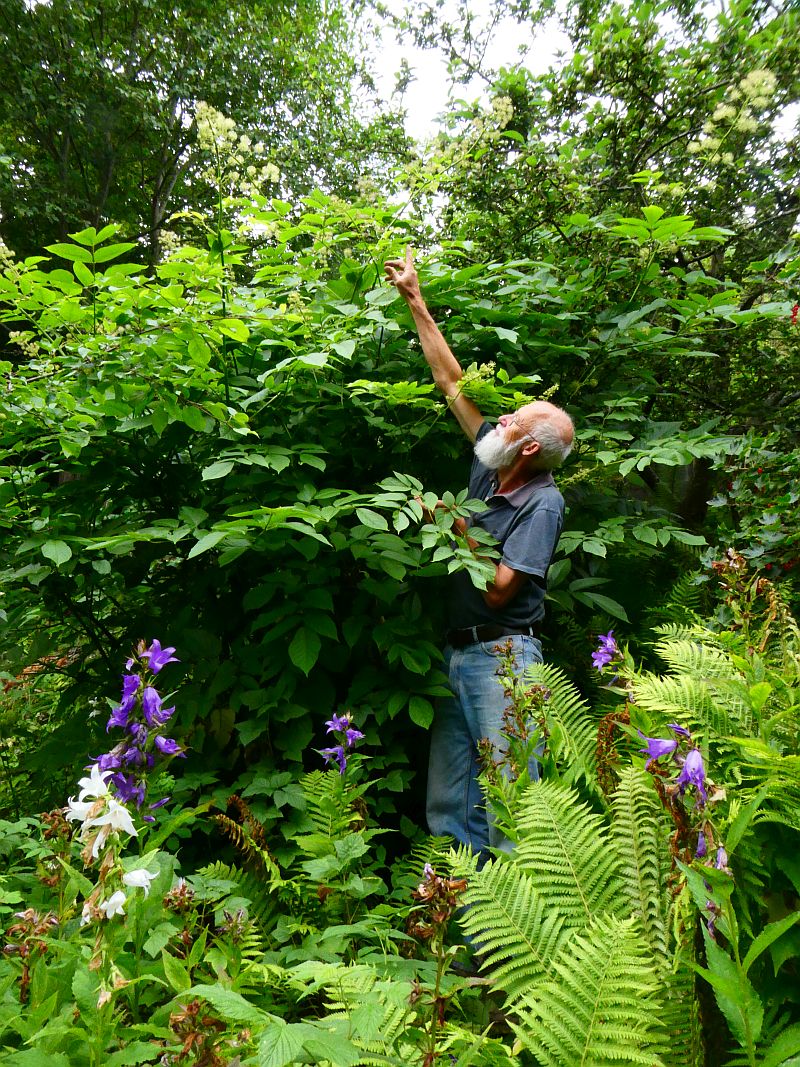
Early June Greens and Whites
Presenting some of this week’s perennial greens and, in the case of the blanched Hosta shoots, perennial whites!
Hosta sieboldiana with ramsons / ramsløk (Allium ursinum) and giant bellflower / storklokke (Campanula latifolia)

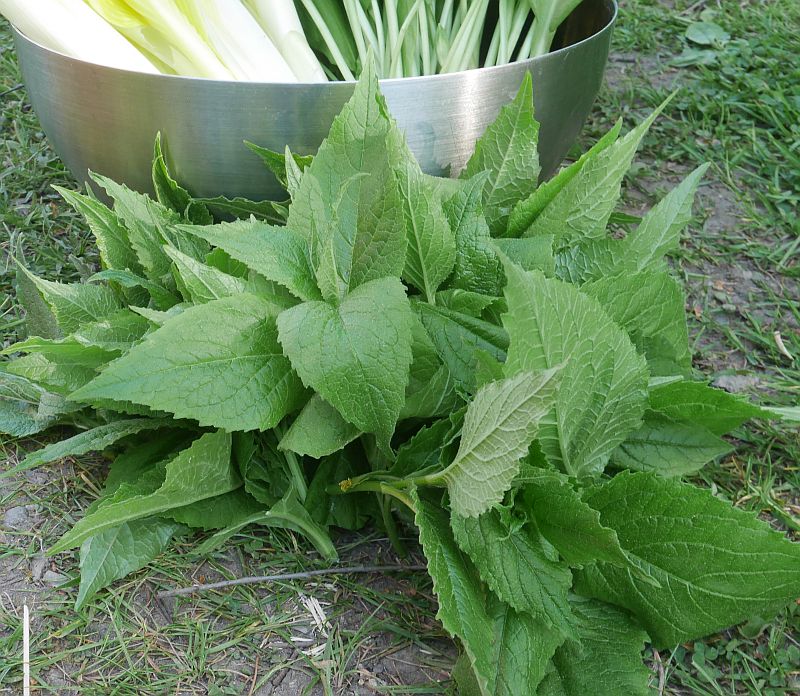
Forced March Perennial Greens
In order to lengthen the season for harvesting of perennial vegetables, I dig up roots of a selection in the autumn and plant them in garden soil in large buckets (which I have a surplus of through my Allium project, now moved to the botanical gardens). As I explain in the video, all of these can be stored outside exposed to the cold as they are very hardy (minimum about -20C here), but some get a head start by moving into my cold cellar where they start growing slowly in the dark. Welcome to my living room:
These were the forced veggies used one day last week, from top left and across – Heracleum sibiricum (hogweed / bjørnekjeks); Campanula latifolia (giant bellflower / storklokke); Myrrhis odorata (sweet cicely / spansk kjørvel); Taraxacum officinale (dandelion / løvetann); (bottom row): Allium angulosum; Ficaria verna (lesser celandine / vårkål); Allium flavescens and Armoracia rusticana (horseradish / pepperrot); (centre right): wild buckwheat / vill bokhvete shoots – Fagopyrum tataricum)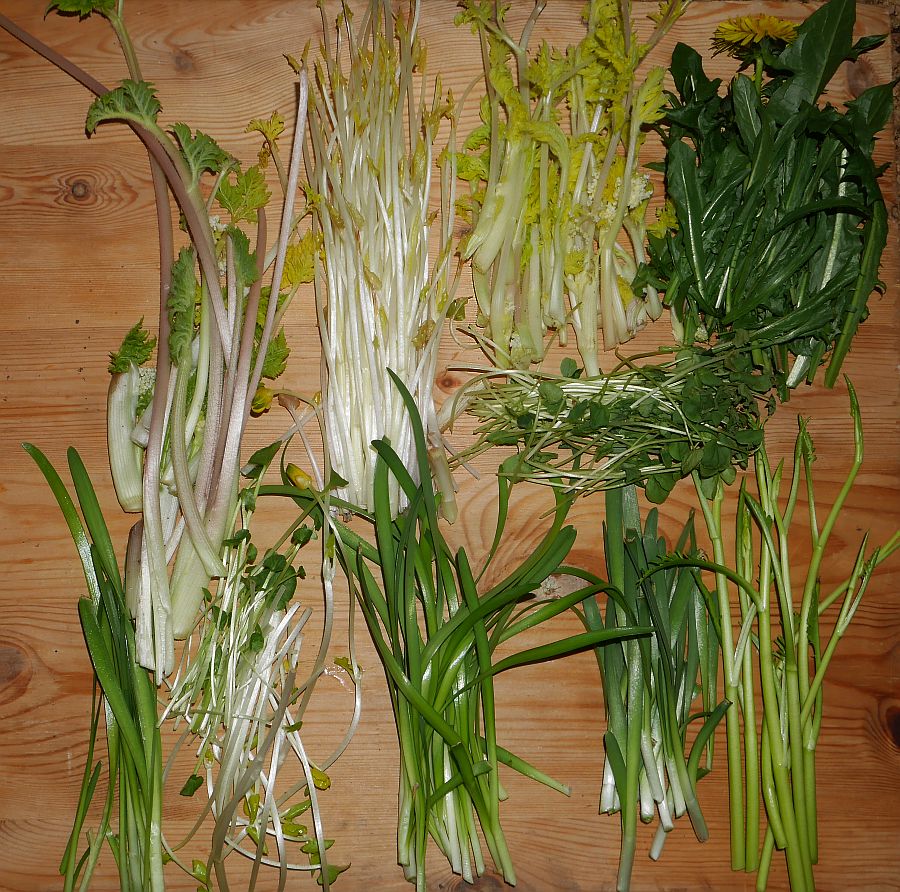
Nettle-leaved bellflower
Nettle-leaved bellflower (Campanula trachelium) has a more southwesterly distribution in Europe than my favourite giant bellflower C. latifolia and replaces the latter species in the south of England, France, Italy, Spain and North Africa and eastwards into West Asia. It has also widely naturalised in northeast North America. Like C. latifolia, it has edible sweetish tasting roots that contain the carbohydrate inulin like Jerusalem artichoke, good for diabetics, but can give flatulence. I suspect, however, that it takes several years to get to a usable size. I’ve been digging over an area of the garden into which Polygonum alpinum (Alpine knotweed) had invaded this week and there were also many self-seeded bellflowers with good sized roots, so I put them to one side to use in a delicious zucchini-bellflower curry which we ate last night!

Nettle-leaved bellflower has similar habitat requirements to the giant bellflower, inhabiting open woodlands and hedgerows and grows well in complete shade on the north side of my house amongst the Hostas. It has a preference for alkaline soils and grows well on clay. It is therefore an excellent plant for the forest garden, although given the choice I would prefer the giant bellflower as the spring leaves of trachelium are coarser and hairier and therefore less good in salads, but nevertheless fine finely chopped in mixed salads. It has been used traditionally in Italy in mixed species spring soups such as minestrella (see page 59) and is one of the ingredients in pistic (boiled and fried, see page 59 of my book Around the World in 80 plants).



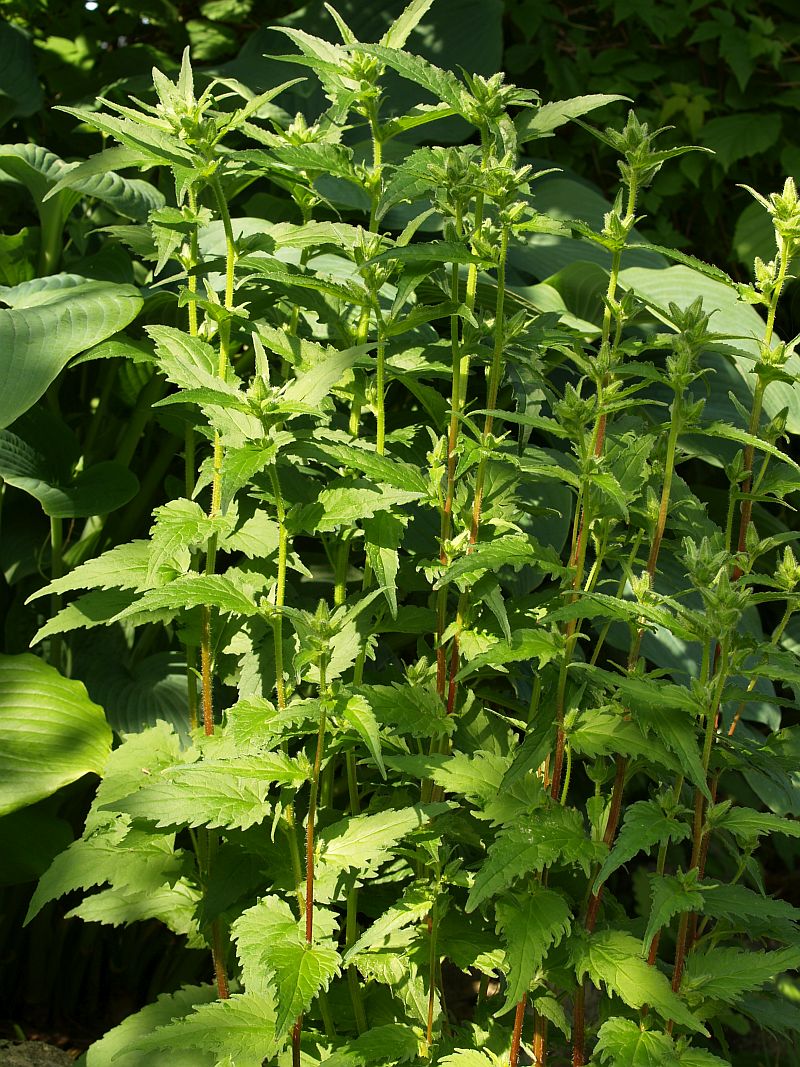
There are a number of ornamental forms available in the trade which you might like to try, including a single-flowered white form (var. alba), which has naturalized in my garden. The double white (‘Alba Flore Pleno’) form and “Snowball” (https://dorsetperennials.co.uk/product/campanula-trachelium-snowball) haven’t come true from seed for me. ‘Bernice’ is another deep purple-blue flowered cultivar.




Norwegian quinoa and swamp greens medley
13th June 2020 perennial greens were stir-fried and served with quinoa and served with Allium ursinum flowers.
Allium validum (swamp or Pacific onion) with flower shoot
Saxifraga pensylvanica (swamp saxifrage)
Gunnera tinctoria
Asparagus officinalis (asparges)
Crambe maritima (sea kale / strandkål broccolis)
Perennial kale “Walsall Allotments” (flerårig kål)
Campanula latifolia (giant bellflower / storklokke)
Aster macrophyllus (big-leaf aster)
flowering shoots of various Russian Rumex acetosa cultivars (sorrel / engsyre)
The greens were stir-fried with chili and garlic and served with Norwegian organic quinoa with ramsons (ramsløk) flowers:


Garden wild green soup
Last night we made a green pea soup and apart from the Hablitzia (Caucasian spinach / stjernemelde), I used perennial vegetables growing in a wild part of the garden. With little or no help from me there’s a bounty of wild edibles in this area under wild hazels (Corylus avellana) and this made for a delicious pea soup with masses of greens.
Campanula latifolia is documented as used in spring soups in the 16th century in my area in Norway and Heracleum shoots are also a tradional soup ingredient, in particular Russian borsch now thought of as a beetroot soup was originally made with hogweed shoots.
Today’s perennial catch
23rd April 2020 perennial greens used in a delicious quiche (eggepai):
Hablitzia tamnoides (Caucasian spinach / stjernemelde)
Myrrhis odorata (sweet cicely / spansk kjørvel)
Rumex acetosa (sorrel / engsyre)
Campanula latifolia (giant bellflower / storklokke)
Urtica dioica (stinging nettle / brennesle)
Allium senescens
Heracleum sphondylium (common hogweed / kystbjørnekjeks)
Aegopodium podograria (ground elder / skvallerkål)
Naturalised Giant Bellflower
No doubt introduced by the previous owners here as an ornamental and despite the fact I spent a lot of time trying to eradicate it from parts of the garden, Campanula latifolia (giant bellflower / storklokke) is nowadays one of my most important springtime vegetables used both cooked and raw. It has naturalised under Hazel in part of the garden! Always nice to see how plants find their own way to the best spots it grows happily alongside Aegopodium podograria (ground elder / skvallerkål). See the excerpt from my book Around the World in 80 plants below.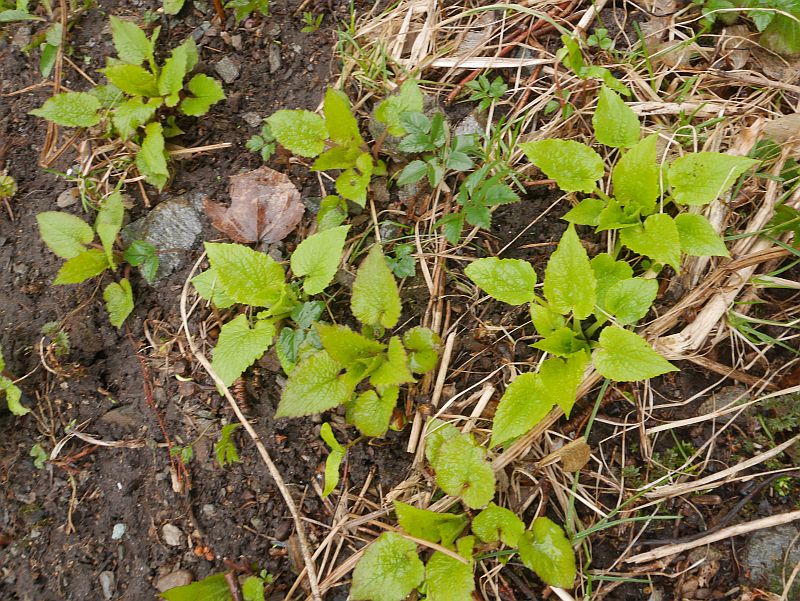
 Here is the excerpt from Around the World in 80 plants (I’m happy to send signed copies within Norway). “When I first moved to my present garden, there was one weed that I struggled to eradicate from my cultivated beds, Campanula latifolia or giant bellflower. The roots in particular were almost impossible to dig out, having a knack of germinating in the most difficult places. Then, one day I was reading the Norwegian book “Gratis Mat av Ville Planter (Free Food from Wild Plants; Holmboe, 1941). I learnt that my worst weed had been wild gathered for food by farmers in my area in the 17th century, a tradition which probably died out soon afterwards. The leaves and stems were collected in springtime and made into a soup. Similar stories have also survived from other parts of Norway and Sweden. Storklokke (literally large bell) is considered to be one of the most commonly used wild food plants in the past in Norway. Both the leaves and roots were used, the latter also ground and added to bread.”
Here is the excerpt from Around the World in 80 plants (I’m happy to send signed copies within Norway). “When I first moved to my present garden, there was one weed that I struggled to eradicate from my cultivated beds, Campanula latifolia or giant bellflower. The roots in particular were almost impossible to dig out, having a knack of germinating in the most difficult places. Then, one day I was reading the Norwegian book “Gratis Mat av Ville Planter (Free Food from Wild Plants; Holmboe, 1941). I learnt that my worst weed had been wild gathered for food by farmers in my area in the 17th century, a tradition which probably died out soon afterwards. The leaves and stems were collected in springtime and made into a soup. Similar stories have also survived from other parts of Norway and Sweden. Storklokke (literally large bell) is considered to be one of the most commonly used wild food plants in the past in Norway. Both the leaves and roots were used, the latter also ground and added to bread.”
It was the nephew of Bishop Gunnerus (after whom the genus Gunnera was named) who published this in Norway’s first flora published 3 years after the Bishop’s death! It was stated that “storklokke” deserves to be considered as one of the best springtime greens! I totally agree! Thanks to the previous owners (Johansen) for planting it for me!
Bellflower-chokes / Storklokkeskokker
My favourite foraging author “(Samuel Thayer’s) favourite dandelion vegetable is what he calls dandelion crowns, as named originally by Euell Gibbons (1961). I prefer to call them dandichokes, as both these and artichoke hearts are located below the flowers. In the early spring, the very young flowers appear at the surface. The dandichoke is just the self-blanched crown between the top of the root, which is a bit below the surface, and the developing flowers. Although small and difficult to clean, they are very tasty”. See the picture below!

The same applies to another of the 80 in my book, Giant Bellflower (storklokke) which also has a delicious (sweet tasting) self-blanched stem between the root and the surface….bellfower-chokes or, even better in Norwegian, storklokkeskokker! I discovered this accidentally last year! I had earlier noted in my book the sweeter tasting spring shoots after blanching (covering to excude light).
















